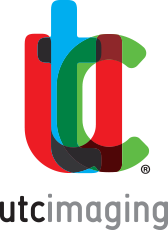Ultrasound Tissue Characterization (UTC) marks a significant leap in tendon imaging, rooted in over 15 years of rigorous scientific research. This innovation emerged from Hans van Schie’s groundbreaking PhD study, setting the stage for an evolution in understanding tendon health and injuries.
Milestones in UTC Research
From its inception, UTC research focused on unraveling the complex structure of tendons. Key studies demonstrated the technology’s ability to distinguish between healthy and pathological tissues, providing insights into tendon healing processes. These milestones have not only validated UTC’s clinical application but also paved the way for its widespread adoption in both human and veterinary medicine.
UTC Research: A Broad Spectrum of Studies Across Human and Equine Applications
The validation and application of Ultrasound Tissue Characterization (UTC) have been extensively explored through over 50 studies, focusing separately on human and equine subjects. These investigations underline the technology’s broad applicability and effectiveness in various specific contexts, ranging from sports medicine to veterinary care.
In the realm of human health, research has ventured into specialized areas such as military training and hand tendon injuries. These studies not only validate UTC’s utility in detecting early signs of tendon degradation and facilitating timely interventions but also showcase its adaptability to specific needs and challenges presented by unique physical activities or injury patterns.
Similarly, in equine medicine, UTC has proven indispensable for monitoring the tendon health of performance horses. Research focused on equine applications of UTC has provided critical insights into the prevention, diagnosis, and management of tendinopathies in horses, highlighting the technology’s capacity to support the well-being and performance longevity of these athletes.
Innovations and Breakthroughs in UTC Research
Recent advancements in UTC research have focused on refining the technology and exploring new applications. Innovations such as the development of more sophisticated algorithms and the integration of machine learning techniques are enhancing UTC’s diagnostic accuracy and efficiency. These breakthroughs contribute to a deeper understanding of tendon pathology and recovery, facilitating targeted interventions.
Current Challenges in UTC Research
Despite its success, UTC research faces ongoing challenges. Questions remain regarding the optimal interpretation of echo-types in varying stages of tendon repair and the best strategies for integrating UTC findings into treatment protocols. Addressing these challenges requires a concerted effort from researchers and clinicians alike, emphasizing the need for continued investigation.
The Future of UTC: Emerging Research Directions
Looking ahead, UTC research is poised to explore new frontiers. Areas such as the predictive value of UTC in injury prevention and the role of UTC in monitoring regenerative therapy outcomes are ripe for investigation. Interdisciplinary research collaborations will be crucial in unlocking these potentials, driving the next wave of innovations in tendon imaging.
Conclusion
The scientific journey of Ultrasound Tissue Characterization, from Hans van Schie’s initial PhD research to its current status, highlights the transformative power of dedicated scientific inquiry. As UTC continues to evolve, it stands as a testament to the importance of continuous research in advancing medical technology and improving patient care. The future of UTC is bright, with ongoing research set to deepen our understanding and enhance our capabilities in diagnosing and treating tendon injuries.
